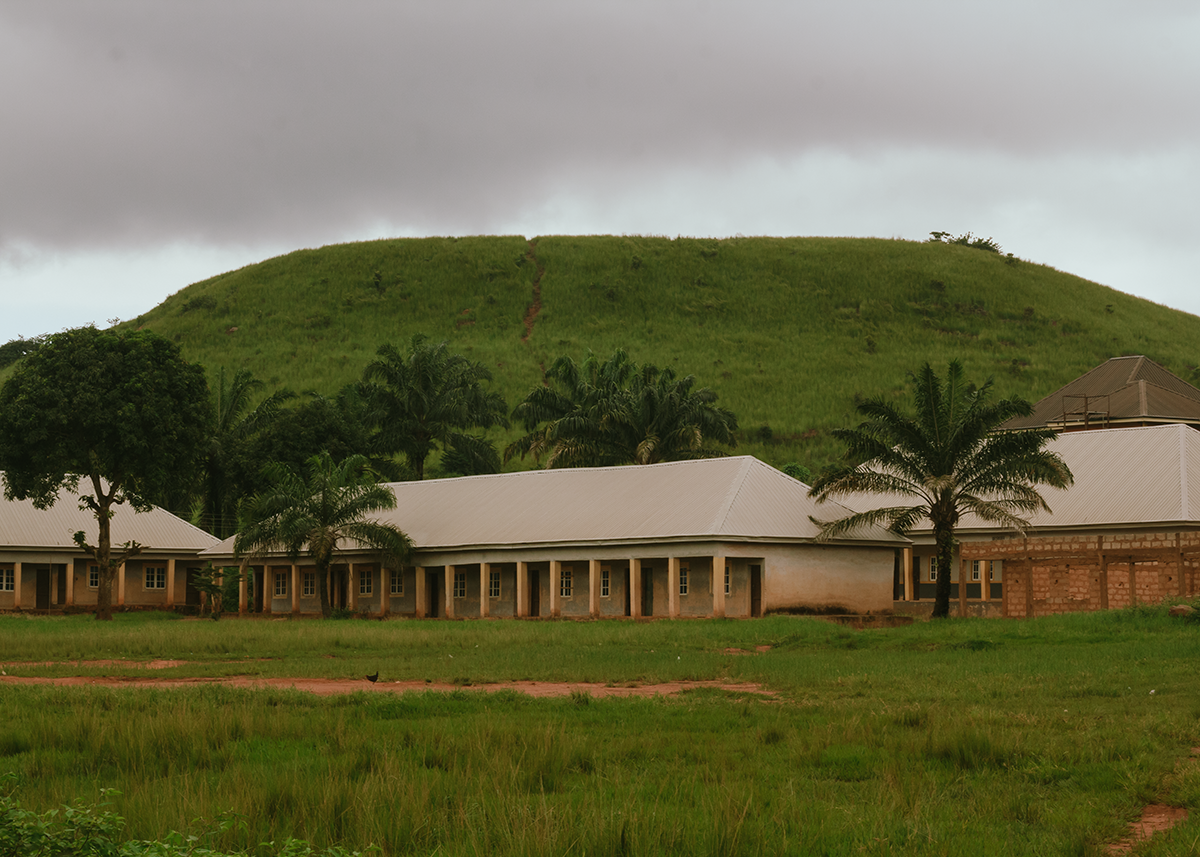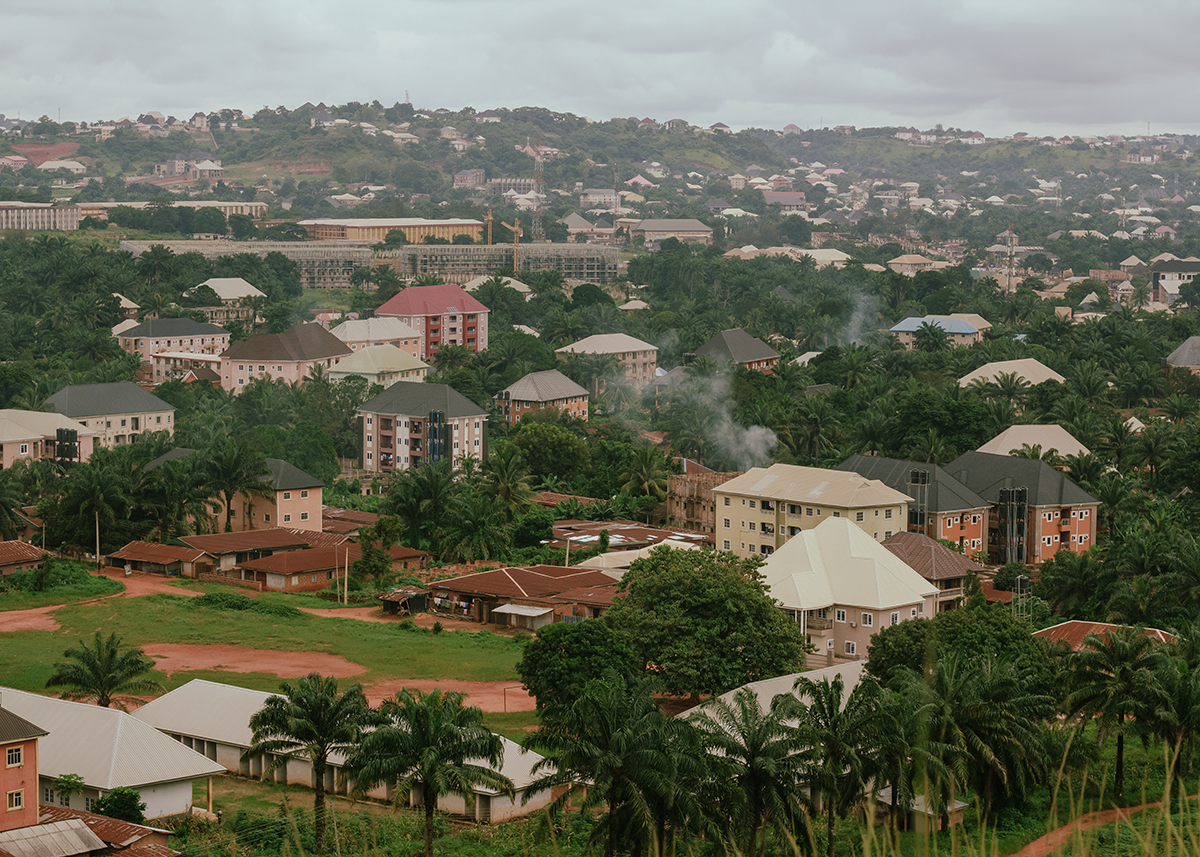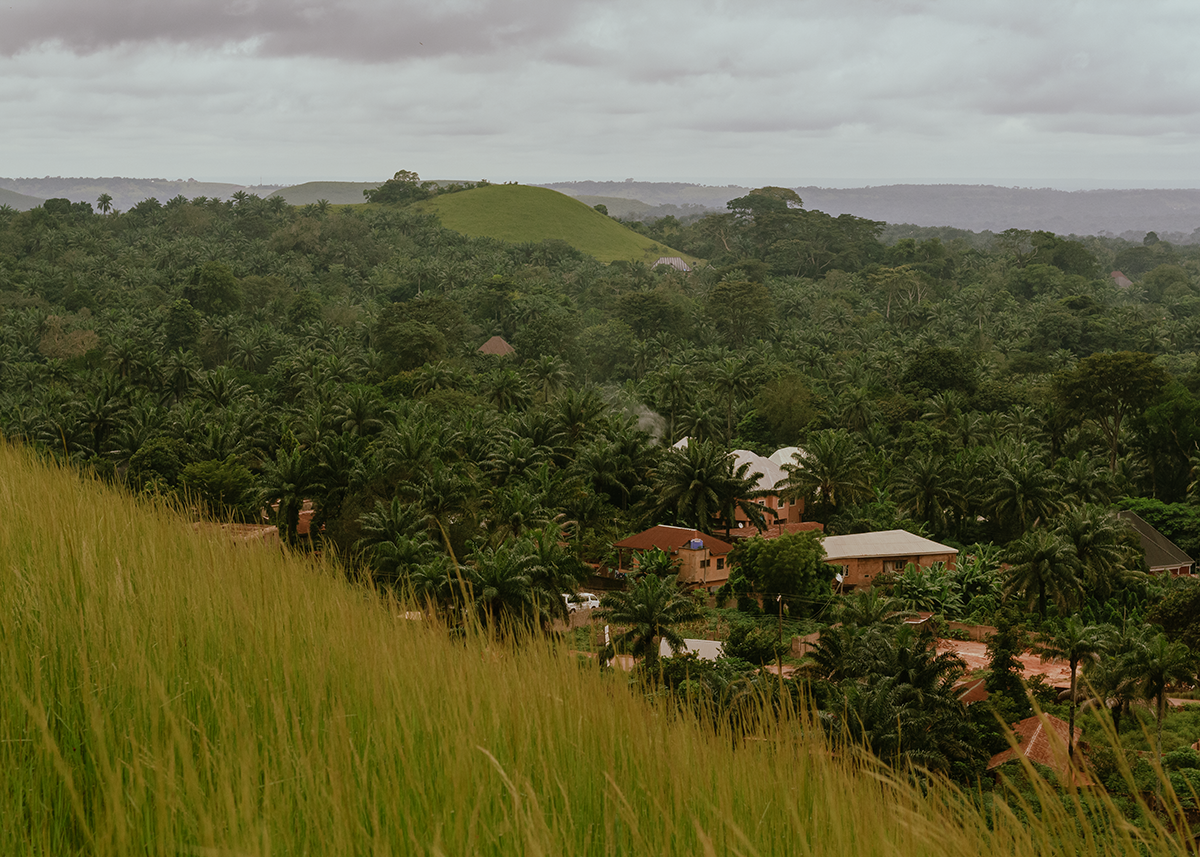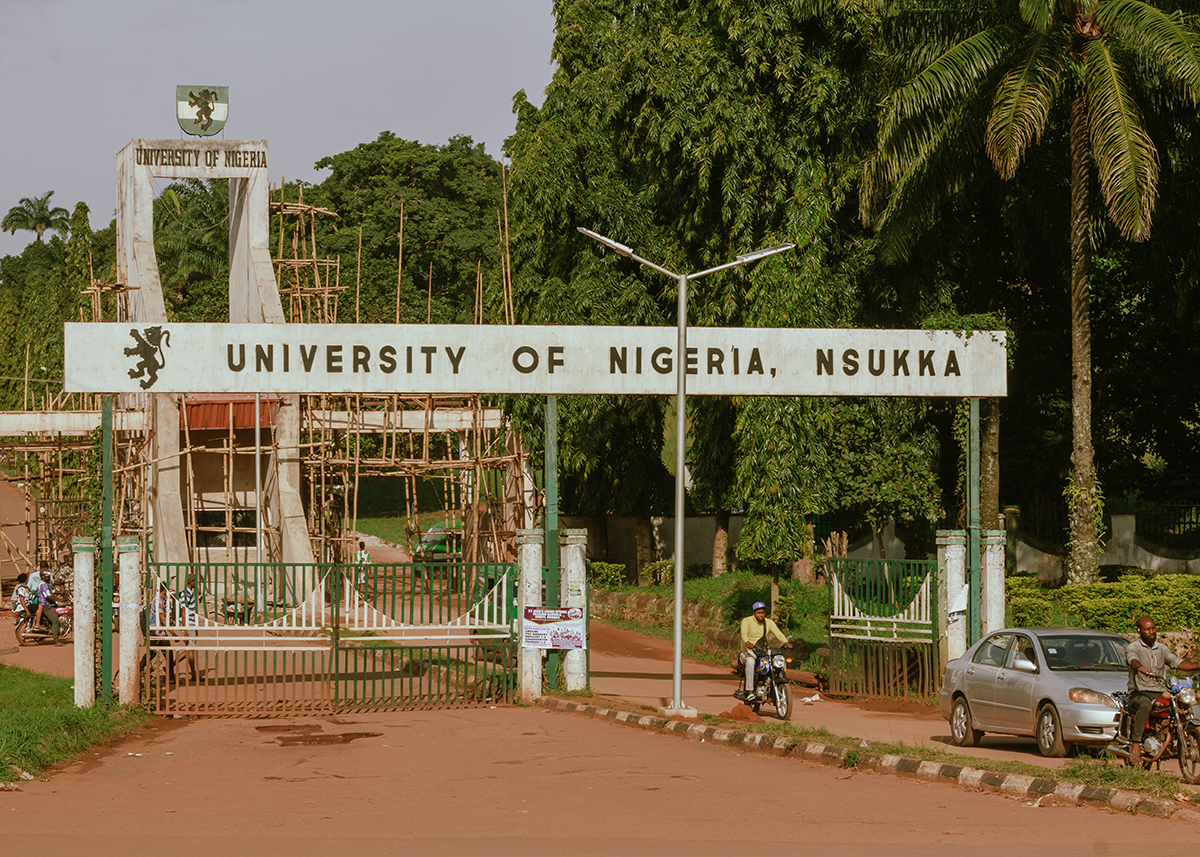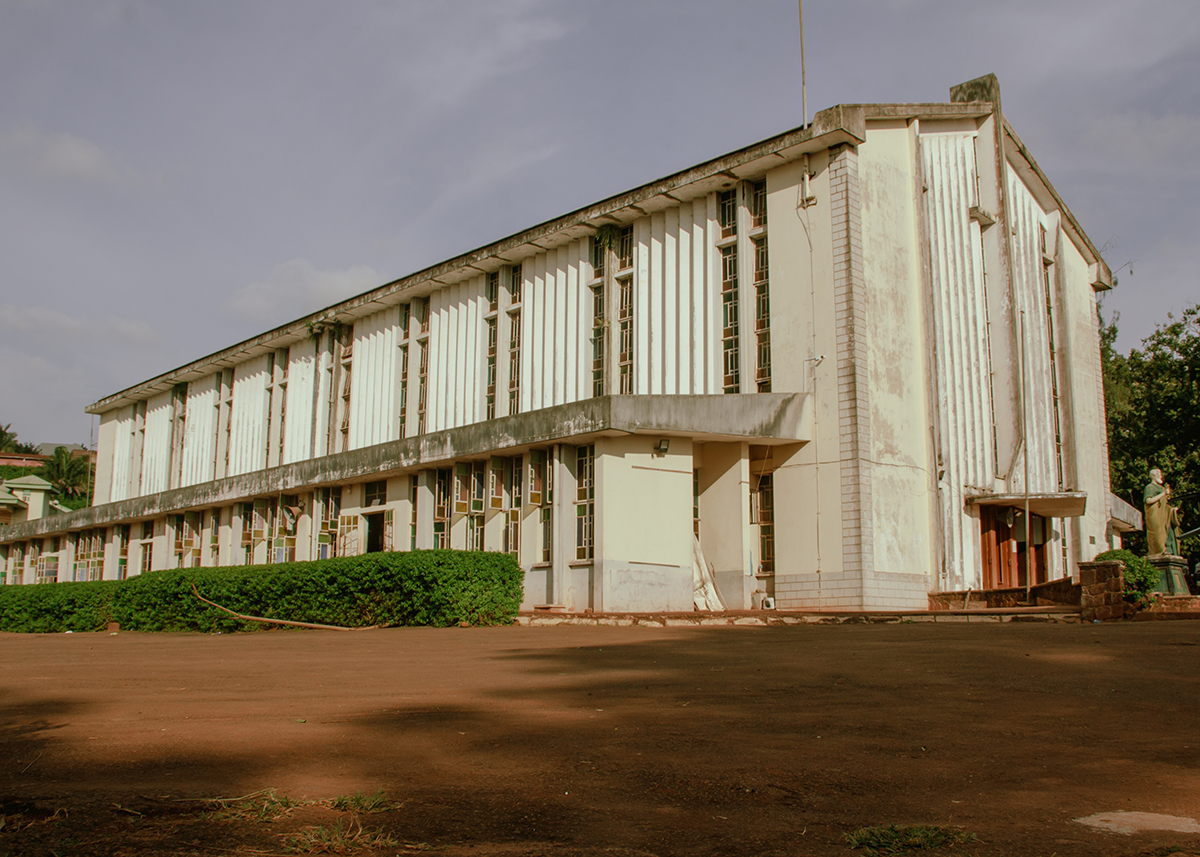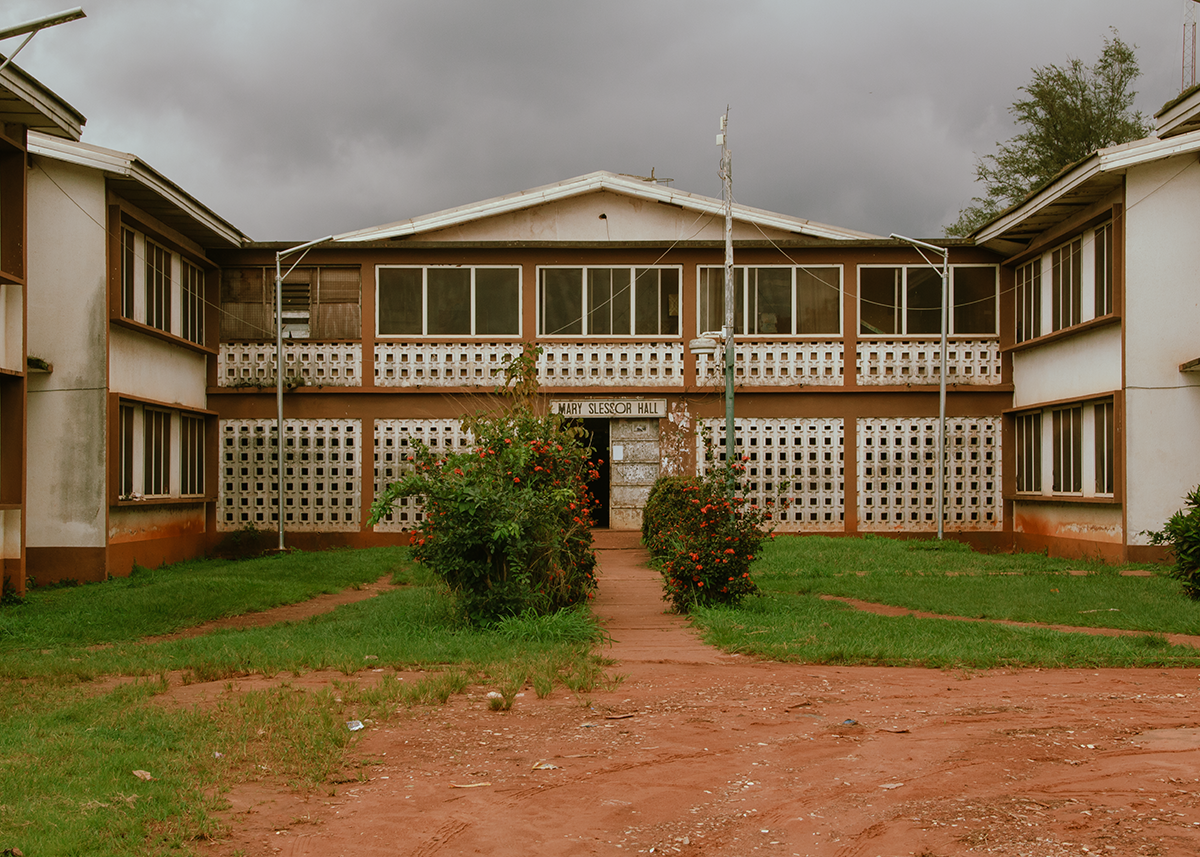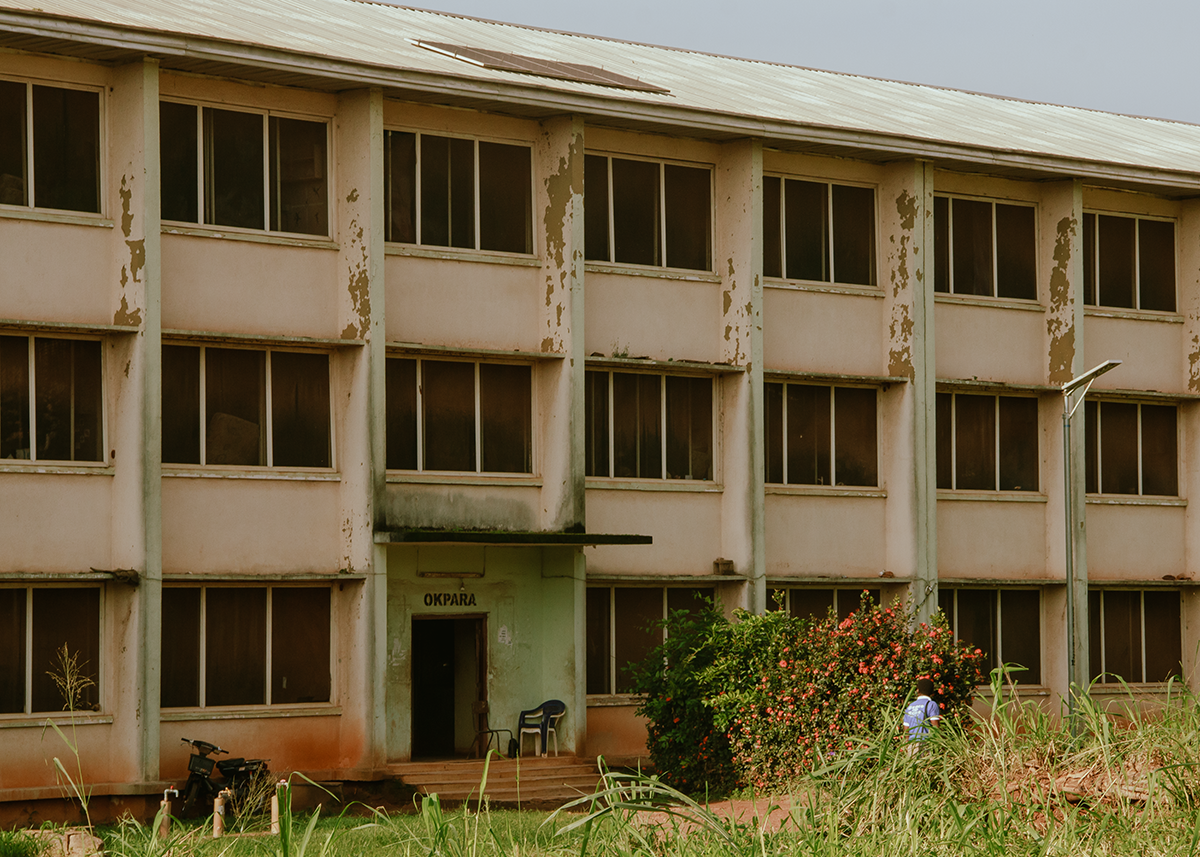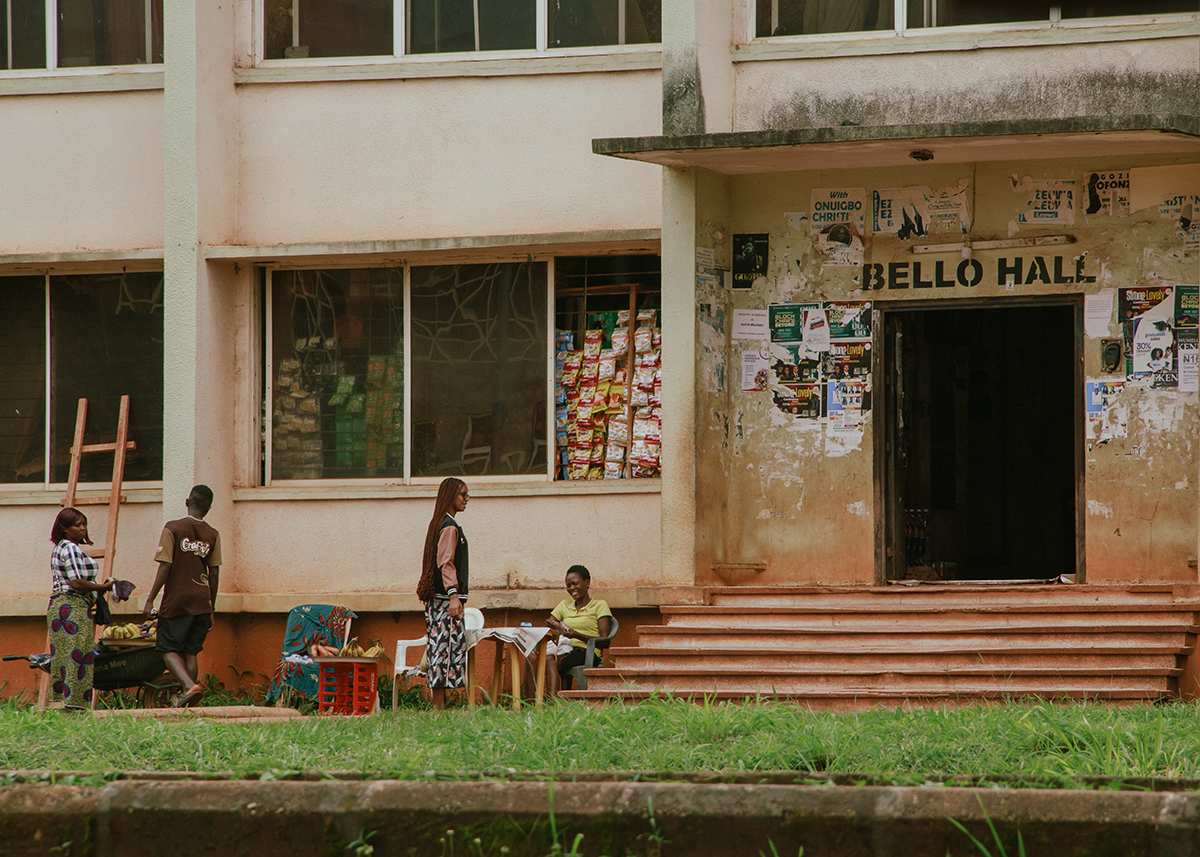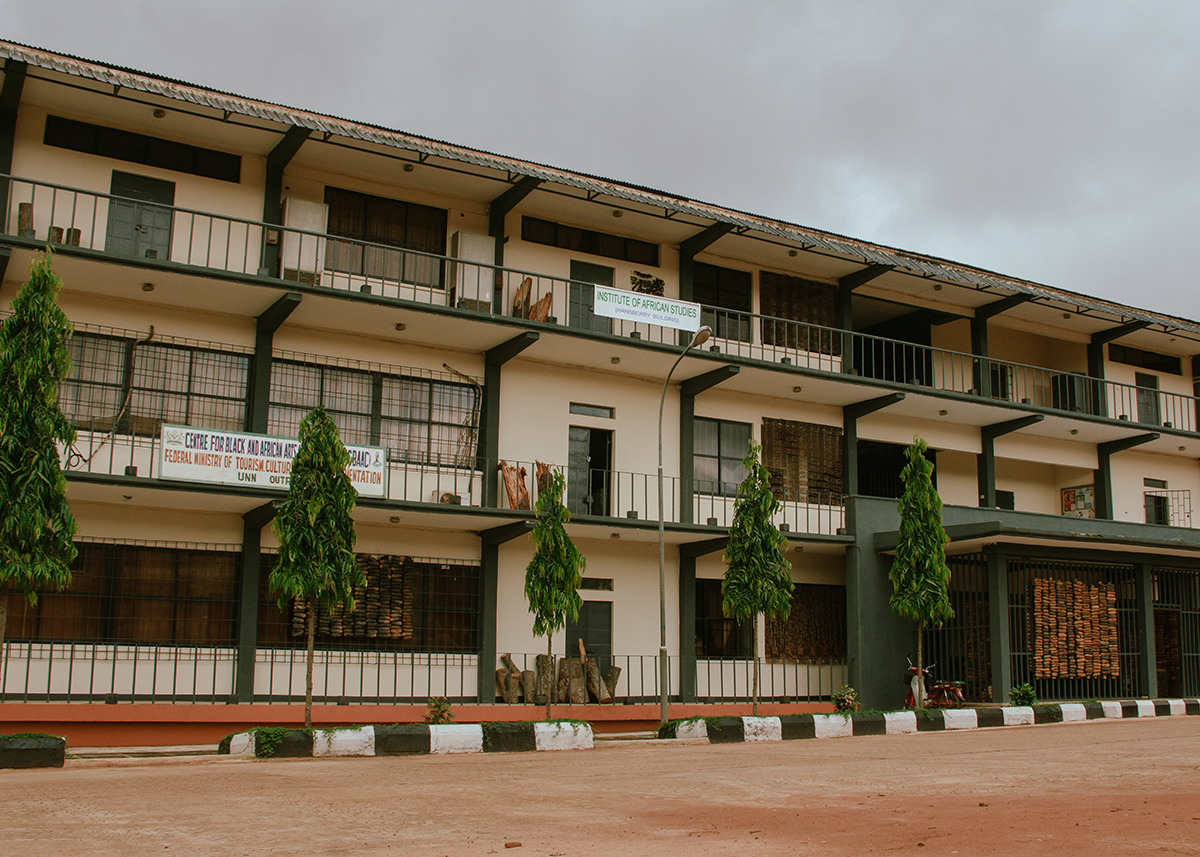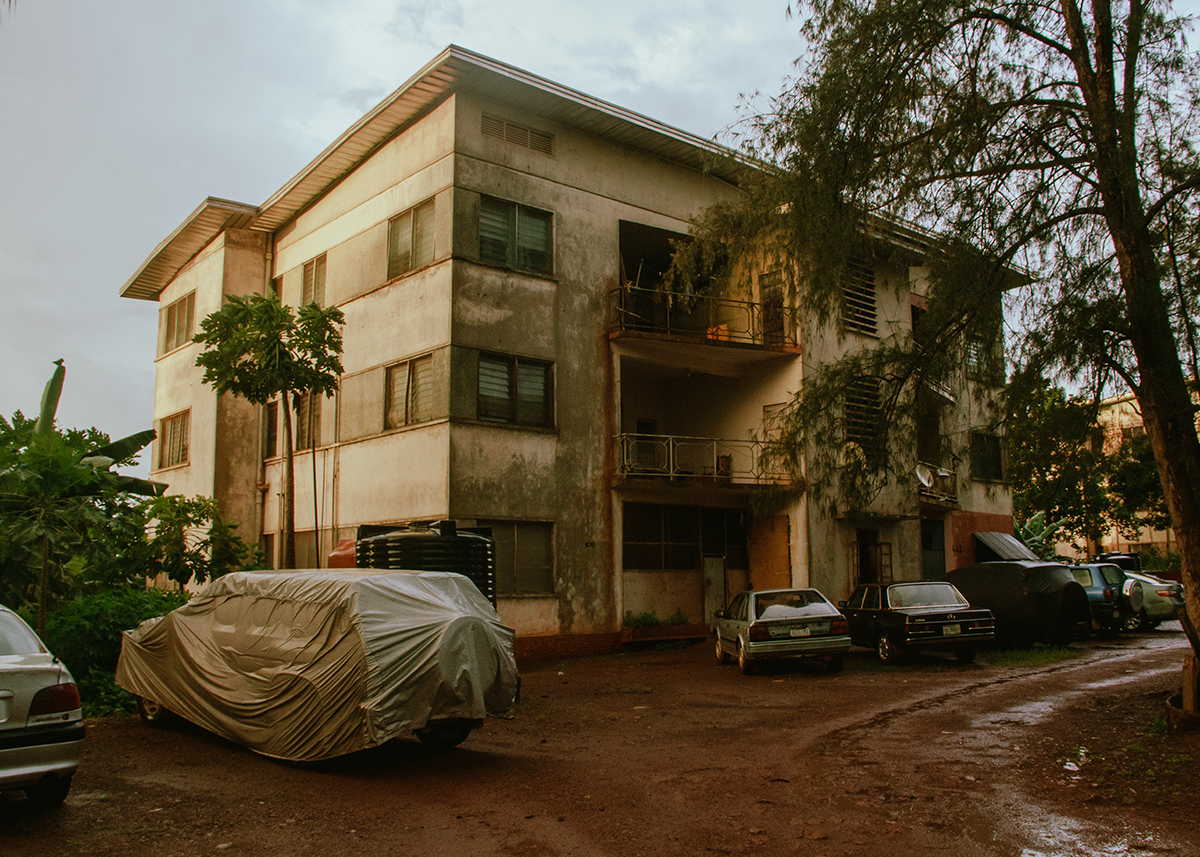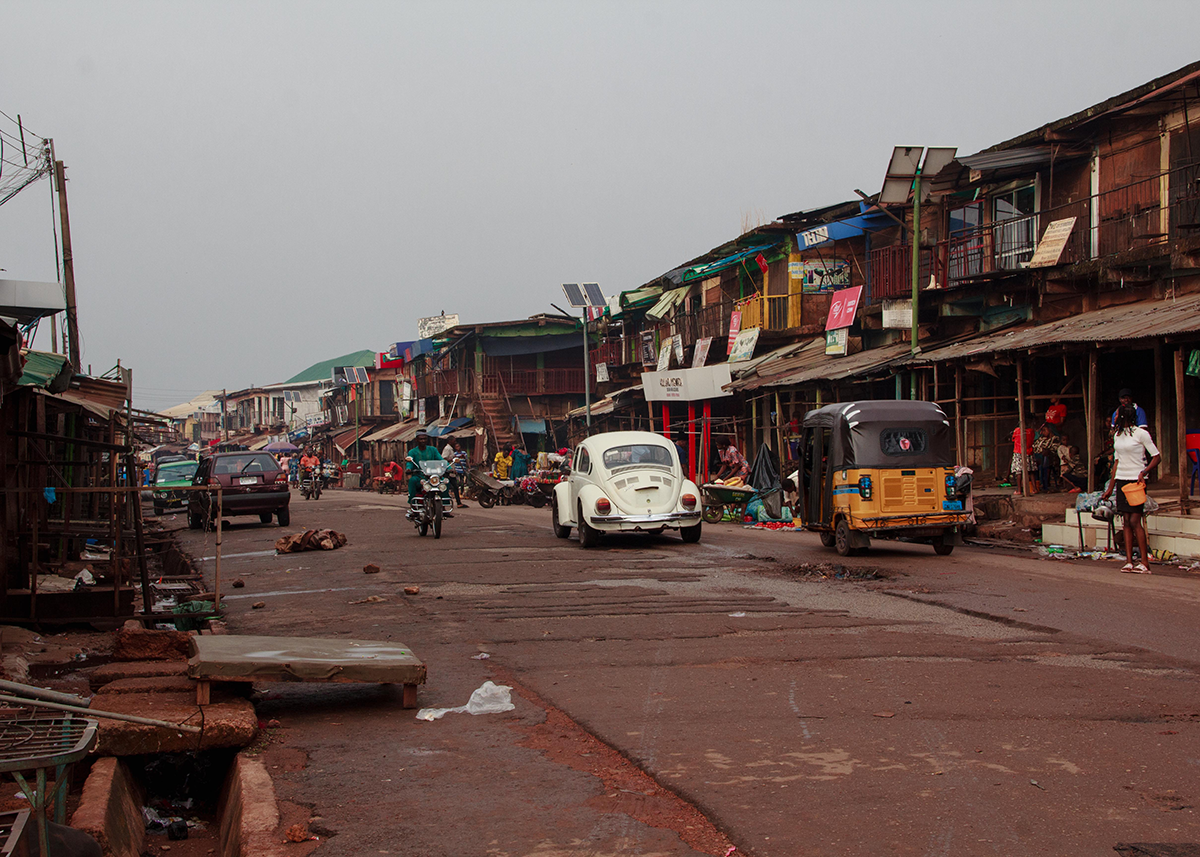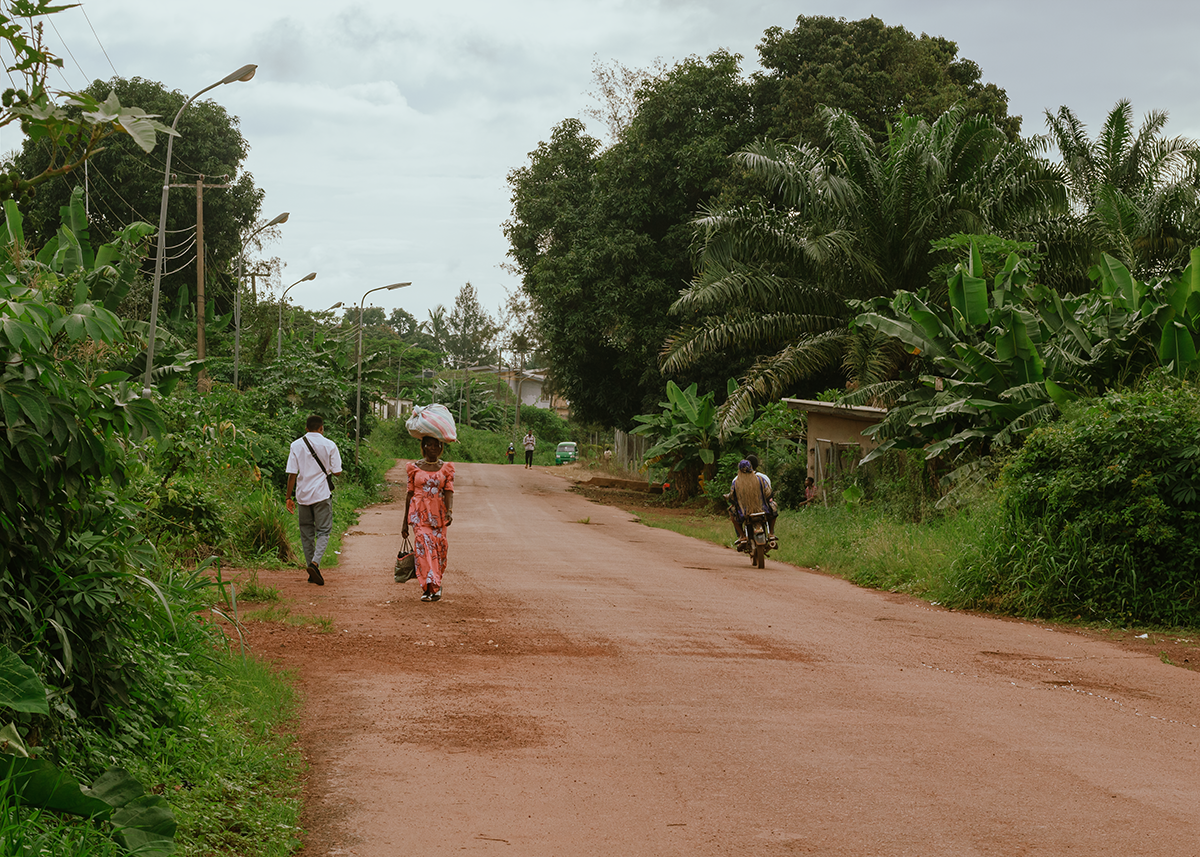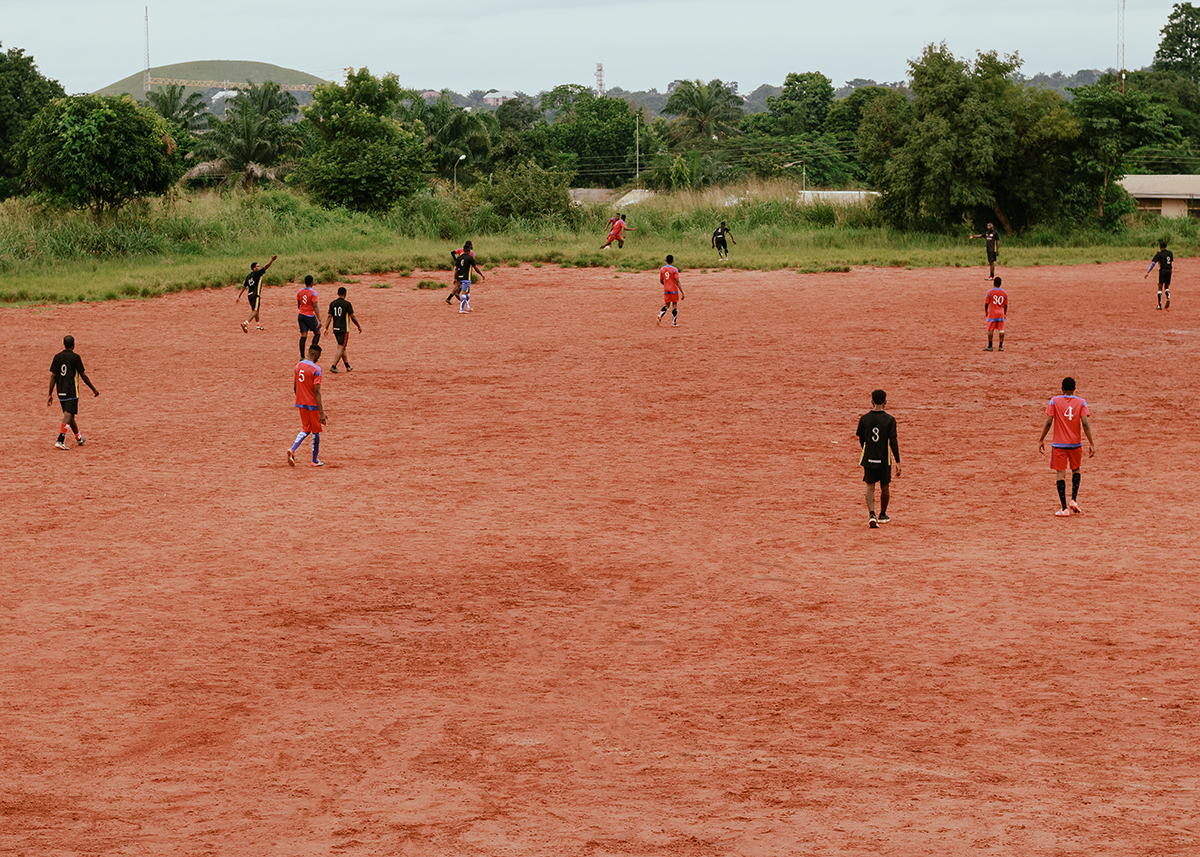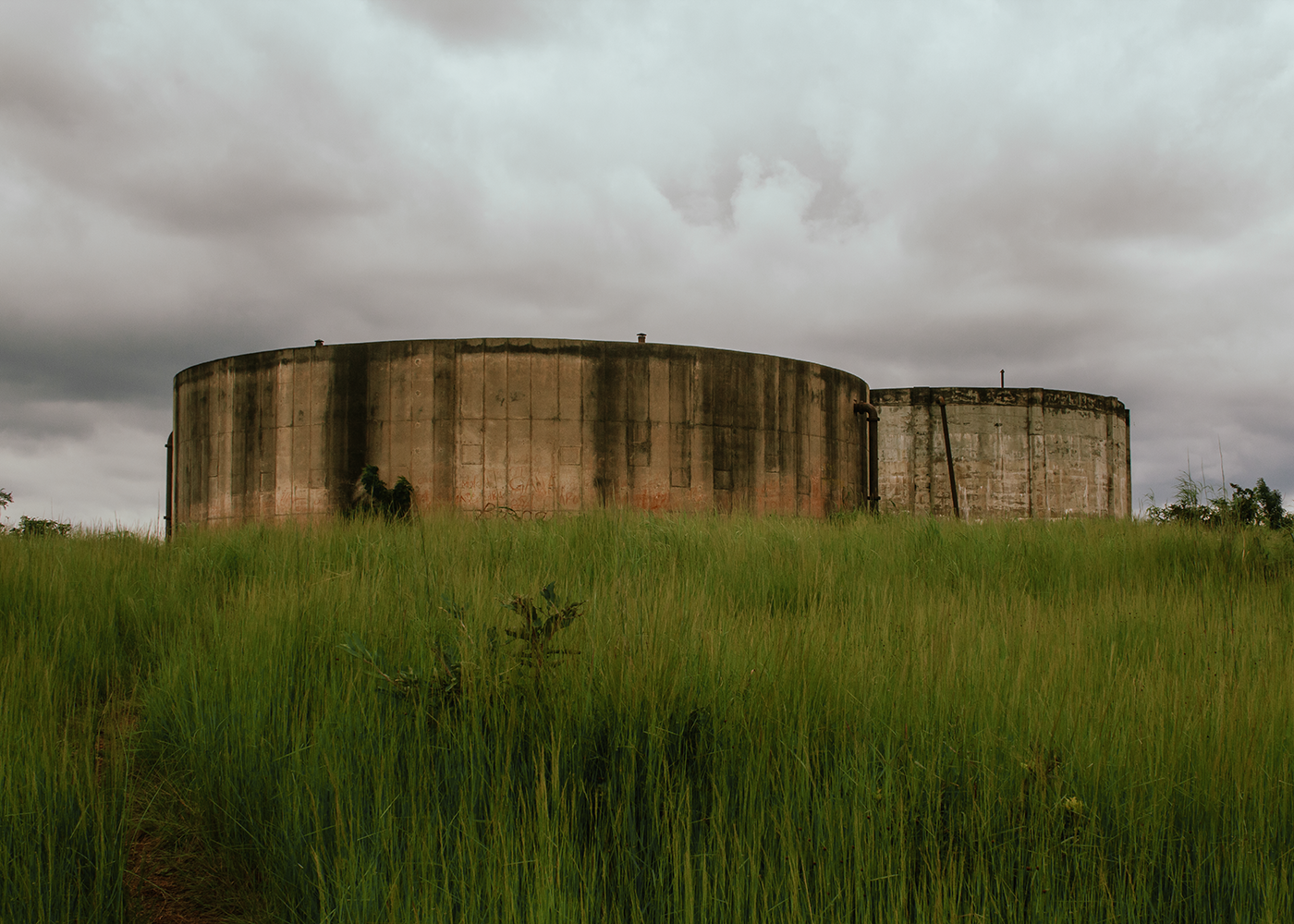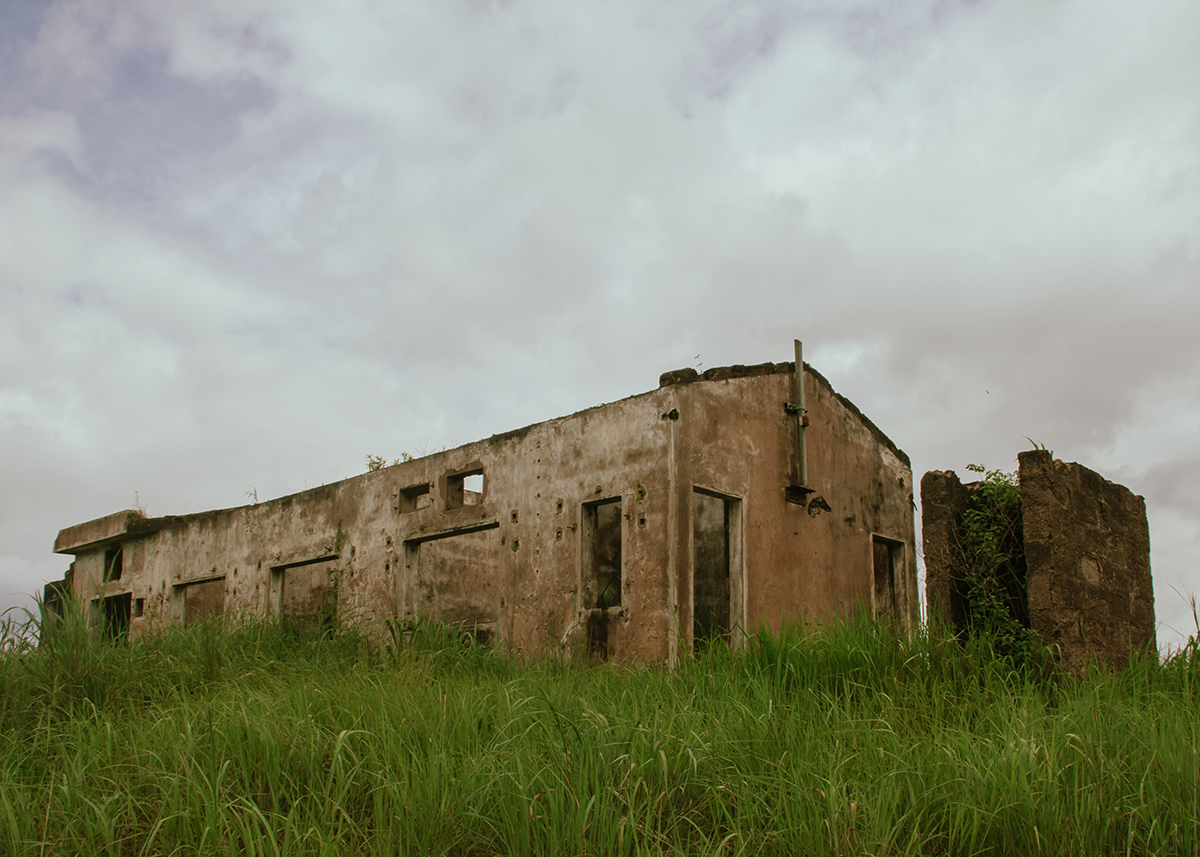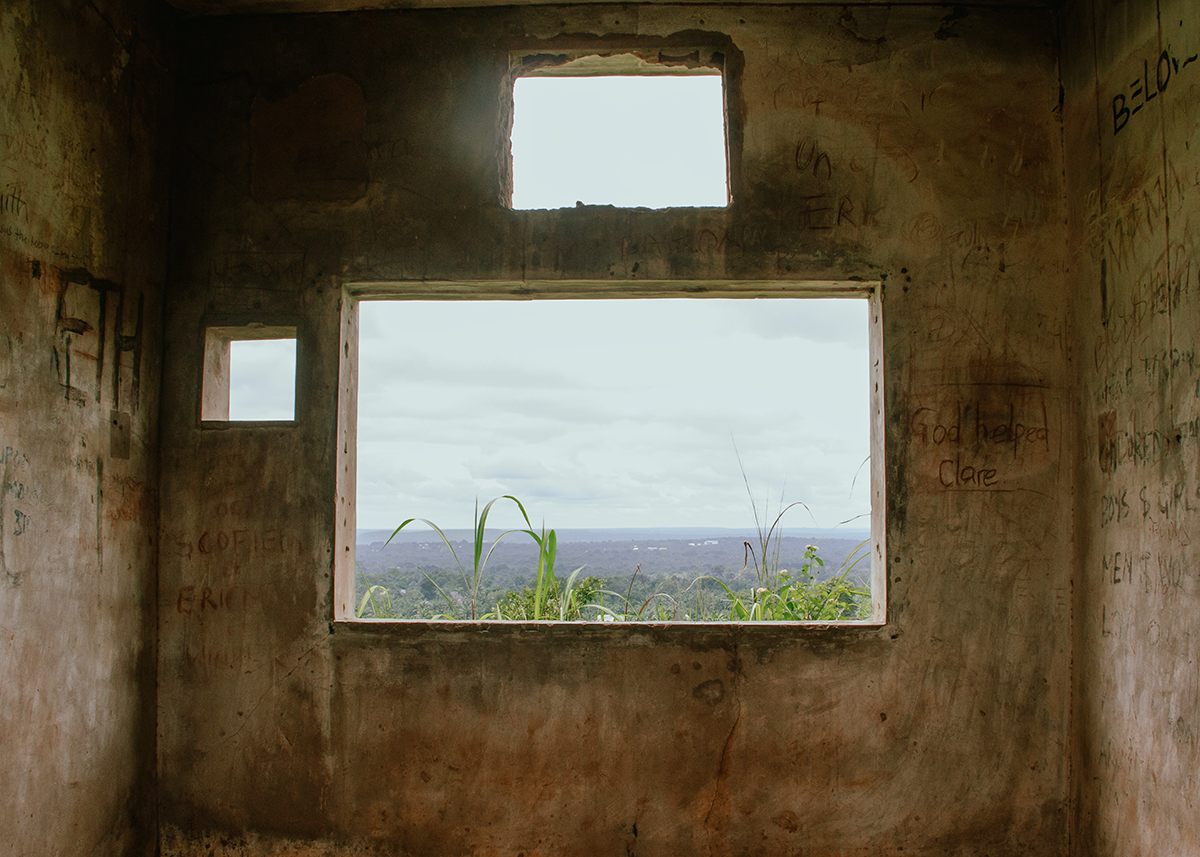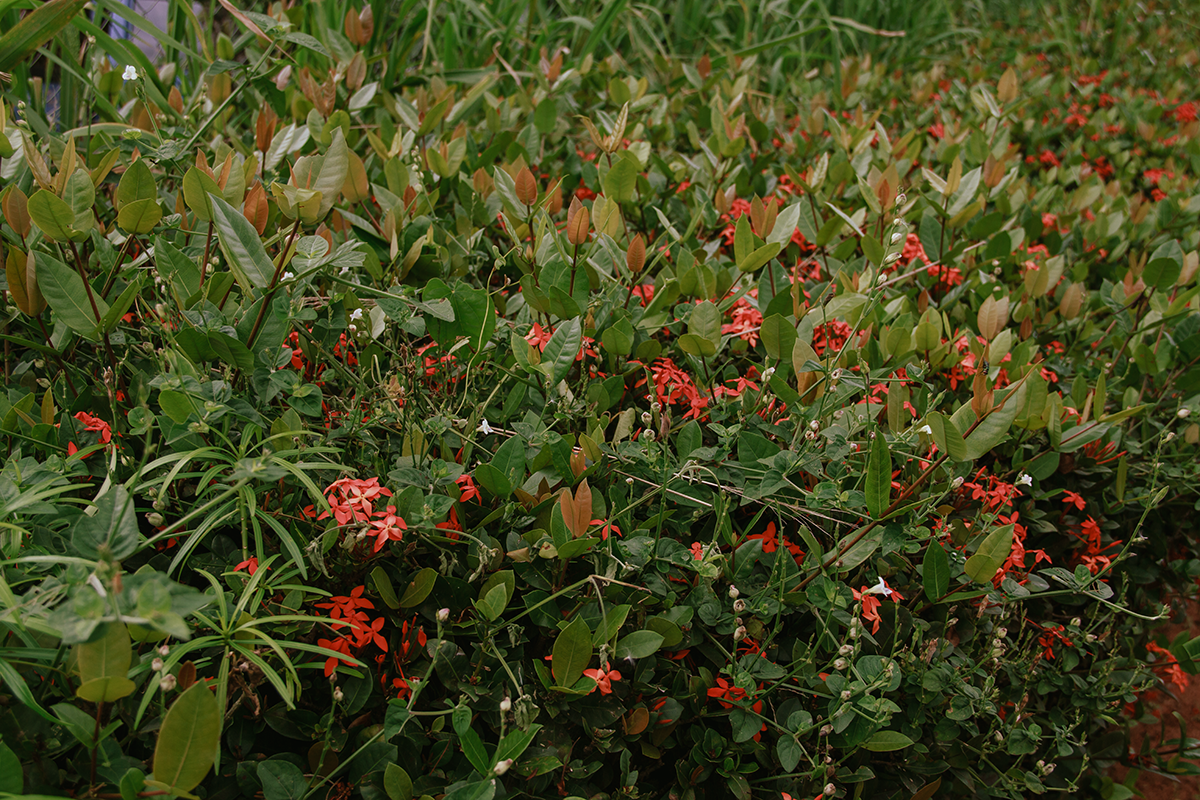20 years ago, Nigerian author, Chimamanda Ngozi Adichie, made her debut in the Nigerian literary scene with Purple Hibiscus. With all its masterfully curated elements that immediately stamped Adichie as a global literary voice, her 2003 novel remains an incisive guide to Nsukka.
Editor’s note: This essay is available in our print issue, Pan-African Dreams. Buy the issue here.
The description of Eugene Achike, the wealthy father of the protagonist and narrating voice of Chimamanda Ngozi Adichie’s Purple Hibiscus, as an ‘oblate in a grey robe’ pulls him from that first paragraph of the first page of the story and places him in front of you. He does not come alone, and he does not return to those pages. He hauls the rest of the book behind him in the narrating voice of his shy but observant fifteen-year-old daughter, Kambili Achike. And long after you are done reading, you find that his story, as told by Kambili, sticks inscribed to your forehead like the ash he meticulously applies on the people in his very slow line on Ash Wednesday.
THE MANY WONDERS OF PURPLE HIBISCUS
Twenty years ago, in October 2003, Adichie made her debut in the global literary scene with her novel, Purple Hibiscus. Garnering numerous acclaims to its name almost instantly—with an endorsement from The Baltimore Sun which now sits on the cover of the book referring to it as ‘one of the best novels to come out of Africa in years’—Purple Hibiscus placed Adichie as a leading voice in the global literary space. It made the 2004 Booker Prize longlist and the 2004 Orange Prize shortlist. It also won the Hurston/Wright Legacy Award in 2004; the Commonwealth Writers’ Prize for Best First Book (Africa) in 2005; the Commonwealth Writers’ Prize for Best First Book (Overall) in 2005; and the One Maryland One Book selection in 2017. It has since been translated into 28 different languages and continues to be a ‘fan-favourite’.
In Nigeria and other African countries like Ghana, Liberia, Sierra Leone, and The Gambia, Purple Hibiscus reached new heights of fame among a new demographic after it was included as one of two African prose texts in the West African Examination Council 2011–2015 syllabus for Secondary School Literature. In these four years, every teenager who studied Literature in a secondary school in any of these countries was required to read this Adichie’s novel. On one hand, perhaps, this may have increased the rate at which the book was pirated across West Africa. On the other hand, it also gave Adichie a readership and followership far beyond any of her contemporaries.
WHAT IS THE ‘PURPLE HIBISCUS FUSS’ ALL ABOUT?
Purple Hibiscus tells the story of the wealthy Achike family with a voice so true and so young that it made the story relatable to both the rich and the poor. In the book, Kambili narrates how their very sheltered lives spin out of control after she and her elder brother, Jaja, visit their Aunty who is a lecturer at the University of Nigeria (UNN) Nsukka in South East Nigeria. In Nsukka, Kambili and Jaja find a house full of laughter and cheer, in what is described as ‘so unlike home’, where their father, a wealthy philanthropist and religious fanatic, rules with a tyrannical fist. After returning home from Nsukka where they got exposed to alternative ways of living, they watch their home fall apart as the country also falls apart under military rule. Their father, the fulcrum of their family’s internal conflict (and the entire story’s conflict), was equal parts a voice against the repressive military regime in the society and an abuser at home—an irony Adichie manages masterfully. In the chaos that ensues, Kambili, a stutterer, and the beloved voice in the reader’s head, finds her voice. She also finds her freedom, and the boldness to admit to herself that she was falling for a priest who was also her auntie’s family friend. By the time the story ends, a character has died, another has gone to prison for a crime they did not commit, and political instability in Nigeria has forced loved ones to migrate thousands of miles away in search of a better life—a masterful rendition of the Nigerian reality.
Purple Hibiscus also explores the intricacies of family bonds through the interrelationships of its characters. Through Papa, Adichie reveals how imperfect perfect-seeming families can be. In Papa Nnukwu, she depicts how enduring the love of family can be. And in Aunty Ifeoma she affirms that love is intentional and that when intentional love is given to people, it liberates. Purple Hibiscus makes a case for how easily unquestioned obeisance can lead to fanaticism and how over-regimentation can strip religious beliefs of any enriching human tone it may have. The novel shows that someone who is benevolent to some people can equal parts be malevolent to others.
As Adichie explores profound themes with wonderful storytelling, she introduces us to the unassuming beauty of the town, Nsukka. Looking back at the Nsukka I encountered in my first reading of Purple Hibiscus in 2011, and the Nsukka I had the pleasure of discovering in 2013, where I spent four years as a student and have returned to every year since 2018, it is how unpretentious Nsukka is that astonishes me most about the town and its portrayal in Purple Hibiscus.
Adichie does not labour in her narration of Nsukka; instead, she shows the town as it is: slow, when Amaka tells Kambili ‘there is no happening place in Nsukka, in case you have not noticed’; isolated, in the tour of the campus with Aunty Ifeoma a few pages later, where Kambili, Jaja and their cousins run into only a handful of people; and heavy with history, when on the picnic on Odim hill with Father Amadi, Aunty Ifeoma, Jaja, and her cousins, Kambili observed that the missing roof, windows, and doors of the ghostly looking house they sat in, must have been blown off during the war, and that the walls of the building, which bore inscriptions like ‘Obinna loves Nnenna forever’ and ‘Emeka and Unoma did it here’ wore stories and stories of lovers who had rendezvoused there in the past.
Reflecting on what Nsukka is in Purple Hibiscus, Adichie’s protégé, Chukwuebuka Ibeh, told me that,
In the course of the book, Nsukka becomes more than just a location to both the characters and the readers. It becomes the place where Kambili finds her voice, finds the boldness to love, and comes to find peace—a home of sorts to her. It becomes more than just where her aunty and cousins live.
This analysis makes sense when you consider that even after all her loved ones had left Nsukka and her life had changed completely, Kambili returns to Nsukka on a visit, and in an act that is almost biblical, goes and asks for a cup of water in the same house her Aunty used to live.
DISCOVERING NSUKKA
Visiting UNN for the first time in 2018, Ibeh could not contain his joy and wonder. The streets were just as he imagined them from reading Purple Hibiscus. He recounted:
What I loved about UNN when I visited Nsukka has to be the carefully lined trees, the lawns, the hedges, all its greenery. It feels like there was an intentionality to how they came to be. So different from my own school, Federal University Otuoke, which was very much smaller in size and not as carefully planned as UNN.
‘Reading about Nsukka in Purple Hibiscus made me choose to study at the University of Nigeria, Nsukka,’ writer, climate activist, and author of the poetry chapbook Conversations with the Sea,’ Ada Nwadike said. Nwadike also added that:
Before reading Purple Hibiscus I had wanted to study at the University of Ibadan because that was where my best friend was going, but encountering the hills of Nsukka and the streets of UNN as narrated by Kambili—who was about the same age as I was when I read the book made me want to go there and see what she saw.
To Nwadike, Nsukka did not hide any of the magic described in the book. As a student there, Nwadike came to love the town’s peculiar quietness, its greenery, and how it possessed a scholarly air different from every other place she had been to in Nigeria; the kind one only finds in university communities. ‘I liked that there was always someone to whom my ideas and thoughts were not strange and unrelatable,’ she explained. ‘In Nsukka, caring about proper disposal of waste or the climate was not a strange thing at all.’
Nwadike also told me that, ‘What Adichie did with Nsukka in Purple Hibiscus is that she made it a character.’ According to Nwadike, Adichie gave Nsukka, ‘features, and the kind of attention a writer would only give a character. So by the time you are done reading Purple Hibiscus, you know Nsukka the way you know the characters in the book, and you feel strongly about it the way you feel strongly about the characters too.’ This is no light thing to say, considering that British novelist, Zadie Smith, has also remarked on how cleverly Adichie’s ‘characters possess a psychological acuity that goes beyond what is obtainable in most contemporary fiction.’
In the essay, ‘How to Change the Name of a Place’, Chinecherem Obor writes about what it was like growing up in Abakaliki, the capital of Ebonyi State. Obor’s narration wears a lot of care and love; the kind of love one reserves for their sole possession. Speaking to him, I could tell that he had seen another place described with that kind of care before. It was Nsukka in Purple Hibiscus. ‘My elder sister went to Nsukka,’ Obor told me, ‘and UNN had the reputation of accepting only the best of the best, so naturally, I wanted to go there. But reading Purple Hibiscus transmogrified this desire. I wanted to see these buildings Adichie described and walk those roads I read about.’
For Obor, the picture of Nsukka in Purple Hibiscus remains vivid. ‘Adichie captured Nsukka in a sepia-toned memory and acquainted people who had yet to visit with the town,’ he said. ‘By the time I was done reading Purple Hibiscus, I knew there was no other option but to go to Nsukka.’
‘I did not know about Nsukka until I read Purple Hibiscus,’ poet, Ernest Ohia, also said. ‘I was in Secondary school, and it was one of the recommended texts for literature. Of all the texts, Purple Hibiscus was the only one I read multiple times. I even took it with me when travelling for Christmas break.’ From the teenage tone of Kambili to the vivid descriptions of Nsukka, Purple Hibiscus called out to Ohia:
By a stroke of luck or chance, my mother was not free to take me to the cybercafe to go register for my JAMB exam. She trusted me to do it and imagined I would pick University of Port Harcourt or any other university closer to home, but my eyes were already in Nsukka. I filled UNN as my choice of school and went home to meet her surprised and not so happy that I would be going to a school six hours drive away from home.
FINDING NSUKKA AND FINDING OURSELVES IN NSUKKA
In Nsukka, Purple Hibiscus’s description of the town and the university campus made sense. You get into the school, and you instantly know you have to make ‘the Aunty Ifeoma tour’ for yourself, too. For most people, Marguerite Cartwright Avenue is not where this tour begins because most people do not make it from the staff quarters. You start the tour somewhere inside school. If you are coming from the male hostels, you start somewhere closer to the Stadium or Mary Slessor Hall if you are coming from the female hostels; Bello and Okpara Halls for those coming down from Hilltop or St Peter’s Chaplaincy. You pass the sprawling green grasses that are trimmed all year round, and you recognize it as what Aunty Ifeoma was talking about when she said ‘that’s the field where we have our Bazaars,’ and you soon learn the field is called Freedom Square. On your tour, you’ll also find the primary school, and by it, the Institute of African Studies that housed Aunty Ifeoma’s office in the faculty of social sciences. Then, there would be Marguerite Cartwright Avenue. On the day you pass the faculty of engineering, you may also see the Odim hills. Somewhere between the faculty of Engineering, the different sports pitches collectively known as ‘franco pitch’, and the boy’s hostel, the Junior Staff Quarters, tucked away under gigantic trees.
‘The first thing that greeted me when I got to Nsukka was the red earth,’ Ohia recalled. ‘It had just rained, and the ground was red and muddy—just like my village—but I did not hate it.’ To Ohia, who graduated from UNN in 2019 and visited each year until he left Nigeria for a creative writing MFA in the US, memories of his first days in Nsukka are still fresh. ‘Nsukka was just quiet in a way that drew you in and allowed you to think,’ he said. ‘It was also the place I encountered The Writers’ Community and my writing blossomed. I was read and I got feedback.’
The UNN campus is a community where muse and creativity are in constant dialogue. For many writers that went through UNN, The Writer’s Community or ‘TWC’, a gathering of young creative literary minds who come together once a week to read and critique each other’s works, is an integral part of their experience of this community and where the dialogue between muse and creativity becomes full-blown conversations. What begins as surreal whispers of inspiration at the foot of vast hills and towering trees become drawn-out creative statements at TWC. With an alumni membership that stretches from Arinze Ifeakandu, a 2017 Caine Prize-shortlisted writer to Cheta Igbokwe an 2023 NLNG longlisted playwright and Ilo Innocent, a 2020 Commonwealth Short Story winning writer, TWC can rightfully boast that it is the strongest literary community in any school in the region or even the entire country. Most of its members in the past ten years started their journey to finding Nsukka with Purple Hibiscus.
‘I liked how quiet it was, the tranquillity it offered allowed one to think and to create,’ Nwadike said. ‘I lived my first two years in awe of this town that did not care about the madness in Aba or Lagos or any other cities.’
Many people who studied at UNN had similar accounts of the effect Nsukka had on them following their first encounter with the town. Beyond its accurate portrayal in Purple Hibiscus, Nsukka is the picturesque small town so surrounded by hills that it feels like it is intentionally hiding. From most parts of the university campus and the surrounding community, you can see one or two hills in the skyline. And if you climbed any of the hills, you would truly feel the words of Aunty Ifeoma who said, ‘The view from the top is breath-taking, when you stand there, you see just how God laid out the hills and valleys,’ with calculated intentionality.
In the rainy seasons, everything blooms; actual frangipanis that come in white, red or yellow colours; white and red ixoras; sunflowers; red and yellow hibiscuses; pride of Barbados line the road from Okpara Hall to the Nnamdi Azikiwe library. The hills become covered with tall grasses that, from a distance, look like perfectly manicured carpet grass. And in the dry season, the grasses go away. The hills become large brown mounds surrounding the university, swallowing the madness outside. Chilly wind gushes down the valley, through the university, carrying the dust and smell of the Sahara with it.
Adichie found a way to incorporate everything that makes Nsukka stand out from every other town in Enugu into Purple Hibiscus. She talks about Okpa, a huge part of the culinary culture of the campus community and of Nsukka culture generally. She also mentions the weather, which in real life, stands out from the weather in Enugu and Abba for its fierceness—the sun perfectly charged to smite everything and everyone under it during the dry seasons; the rain coming down so strongly with heavy winds during the rainy season, removing roofing sheets from the tops of buildings. The rendering of Nsukka in Purple Hibiscus was so fine that Adichie even remarked on the earthworms in Nsukka—which are noticeably large.
Like any village community, Nsukka offers a provincial retreat from the ‘craziness’ of most Nigerian cities. However, unlike most village communities, it wears the scent of intellectual rigour and has an air of documented history cascading the pre-civil war era buildings still standing at every turn. Being in Nsukka means being in a place quiet enough for you to think and existing in a bubble of erudition. Walking through Nsukka or UNN means walking through years and years of stories about what could have happened where and when—all catalysts for the thinker and the creative. For the longest time, unsurprisingly, UNN had the reputation of admitting the best brains, people who would not squander an opportunity for introspection and creativity.
Purple Hibiscus is like a compass pointing us all to Nsukka. In my generation, we read the novel in different states in different parts of Nigeria. Many of us then made up our minds to find the obscure little town where the novel was set, that a then-very shy, young writer had described with so much care. Nsukka promised the kind of solitude that appealed to our young creative souls; and it was a promise that came with a new kind of longing. It was the quest to satiate this hunger that led many of us to Nsukka.
Such was the pattern to our encounters with Nsukka: first, Kambili took us to Nsukka and convinced us to apply to study at UNN, and we did. Then we got into UNN, proud, happy and starry-eyed; arriving as students, we were greeted by tall trees, aged buildings that stretched out and an atmosphere heavy with stories of all the feet that had walked those same roads and raised the same red dust we now raised with the hurried stumping of our heels. Here, the thinkers among us noted their thoughts, and the creatives penned down all they felt. Years later, the memory of Nsukka, that little town, hidden away and unwilling to change in a hurry, remains fresh in all our minds⎈
PURPLE HIBISCUS
CHIMAMANDA NGOZI ADICHIE
336 PP. KACHIFO LIMITED, OCTOBER 2003
NIGERIA
The views, thoughts, and opinions published in The Republic belong solely to the author and are not necessarily the views of The Republic or its editors. We want to hear what you think about this article. Submit a letter to the editors by writing to [email protected].



